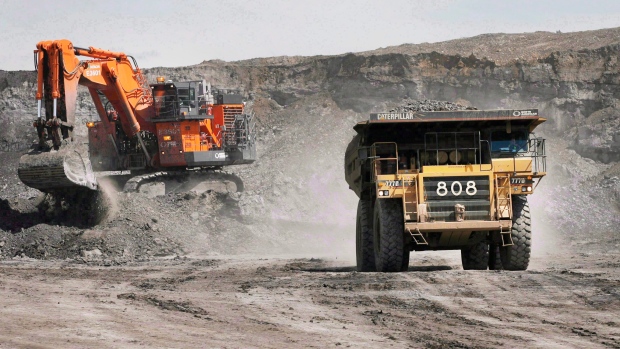Dec 9, 2016
The cautious optimism creeping into the oil patch ‘after two years of purgatory'
By Tara Weber

As a number of energy companies increase their capital spending for 2017, the oil patch appears to be feeling more optimistic as the year edges to a close.
For many in Alberta, this turning tide is a big relief after years of recession and deep cost-cutting.
Earlier this week, both Crescent Point Energy (CPG.TO) and Cenovus Energy (CVE.TO) loosened their purse strings for next year. Crescent Point boosted its capital budget to $1.45 billion, an increase of 31 per cent over 2016, while Cenovus hiked spending by 24 per cent to between $1.2 and $1.4 billion for the upcoming year.
Cenovus also announced plans to restart of expansion work at its Christina Lake oil sands project, which was paused in 2014 due to declining oil prices. Still, the company says it remains cautious, and is keeping a sharp eye on costs.
"We are very focused on continuing to drive improvements in our cost structure, where we have had significant accomplishments over the last two years; and, very importantly, maintaining the strength of our balance sheet," CEO Brian Ferguson told BNN in an interview on Thursday.
Cenovus said it expects its long-term oil sands sustaining capital to be about $7.00 per barrel, about 50 per cent lower than in 2014.
‘OUTLOOKS ARE IMPROVING’
The two Calgary-based companies join a list of many that are planning to spend more in 2017, including Whitecap Resources, Enerplus Corporation and Painted Pony Petroleum. And it comes as rig counts in both Canada and the United States are on the rise.
"After two years of purgatory, oilfield services companies should begin to realize improved customer demand in 2017, and in certain instances, pricing increases, which should improve financial results and ultimately propel strong stock price performance through 2017," Ian Gillies, director of equity research with FirstEnergy, said in a research note.
"We acknowledge that we are not ‘out of the woods’ yet, but outlooks are improving.”
The province of Alberta predicts the economy will grow by 2.3 per cent next year, thanks in big part to improving commodity prices and the post-fire rebuilding efforts in Fort McMurray.
That encouraging sentiment is also echoed by the Alberta Treasury Board.
"Our research suggests that the worst of the 2015/16 oil price downturn is now behind us," said Todd Hirsch, ATB's chief economist.
"Oil prices should continue to grow modestly in 2017. That will bring stability to our province's petroleum sector, but not growth. Hiring and resumption of investment will be weak in 2017."
Alberta's unemployment rate reached 9 per cent in November, the highest in more than two decades. In the city of Calgary, the jobless rate is even higher at 10.3 per cent.
However, despite the increases in spending, a rebound in job numbers may not be on the table any time soon.
"The projected growth in our GDP is a good sign, but 2017 will still be a tough year as many Albertans will continue to be out of work," Hirsch said.
"Things are going in the right direction but employment levels will take time to catch up to the rise in GDP."
HEADCOUNT COMEBACK?
That seems to be the case at Cenovus. Ferguson said that when it comes to hiring, the company will not increase net employment next year.
He adds the company's headcount will likely never be back to the levels seen just a few years ago.
"We were previously staffed to be able to proceed with five simultaneous oil sands projects at one time. Today we're staffed to be able to proceed with up to two oil sands projects," Ferguson said.
Even though capital investment is set to rise in 2017, the increases won’t be uniform across the entire oil and gas sector.
Peter Tertzakian, Arc Financial’s managing director and chief energy economist, said long-term oil sands projects with heavy costs and carbon will be in need of more investment beyond next year.
The bigger rebound will be seen in tight oils, liquids and natural gas plays.
"Post-downturn, capital investment is heavily favouring a subset of the business that has three traits: bite-sized development, fast investment payback and lower carbon (natural gas and lighter oils)," Tertzakian said.
"This trifecta is what the Canadian oil and gas industry will be biasing their bets toward to compete against their U.S. counterparts in Texas, Oklahoma and Pennsylvania."




